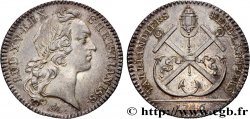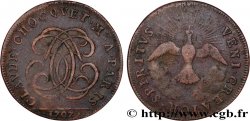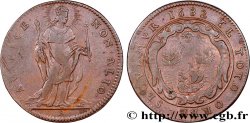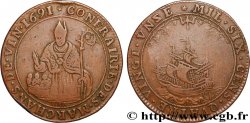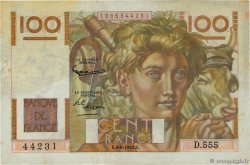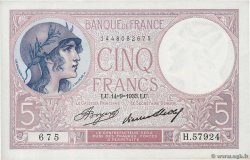You must signin and be an approved bidder to bid, LOGIN TO BID. Accounts are subject to approval and the approval process takes place within 48 hours. Do not wait until the day a sale closes to register. Clicking on « bid » constitutes acceptance of the terms of use of cgb.fr private e-auctions.
Bids must be placed in whole Euro amounts only. The sale will start closing at the time stated on the item description; any bids received at the site after the closing time will not be executed. Transmission times may vary and bids could be rejected if you wait until the last second. For further information ckeck the E-auctions F.A.Q.
NO BUYER'S FEE.
NO BUYER'S FEE.
| Estimate : | 40 € |
| Price : | 41 € |
| Maximum bid : | 41 € |
| End of the sale : | 16 September 2019 18:04:30 |
| bidders : | 6 bidders |
Type : Émission de 1750
Date: 1750
Metal : silver
Diameter : 31 mm
Orientation dies : 6 h.
Weight : 9,76 g.
Edge : cannelée
Catalogue references :
Obverse
Obverse legend : LUD. XV. REX. CHRISTIANISS.
Obverse description : Tête de Louis XV signée J.C.R [n°309], type Guéant Prieur 554A.
Obverse translation : Louis XV, roi très chrétien.
Reverse
Reverse legend : INSUPER. ALAS. ADDIDIMUS ; À L'EXERGUE : LES. JUGE. ET. CONSULS. 1750.
Reverse description : La Justice aveuglée marchant à droite et tenant de la dextre une épée et de la senestre une balance.
Reverse translation : Nous lui avons ajouté des ailes.
Commentary
Le terme de consuls désigne les juges des tribunaux de commerce établis par l'Édit de 1563. La juridiction consulaire de Paris se composait d'un juge et de quatre consuls élus chaque année par les six grands corps, comprenant également les marchands et les libraires imprimeurs.
On note que le buste utilisé est le même que pour le revers sans millésime alors que ce buste est par ailleurs daté de 1732.
On note que le buste utilisé est le même que pour le revers sans millésime alors que ce buste est par ailleurs daté de 1732.







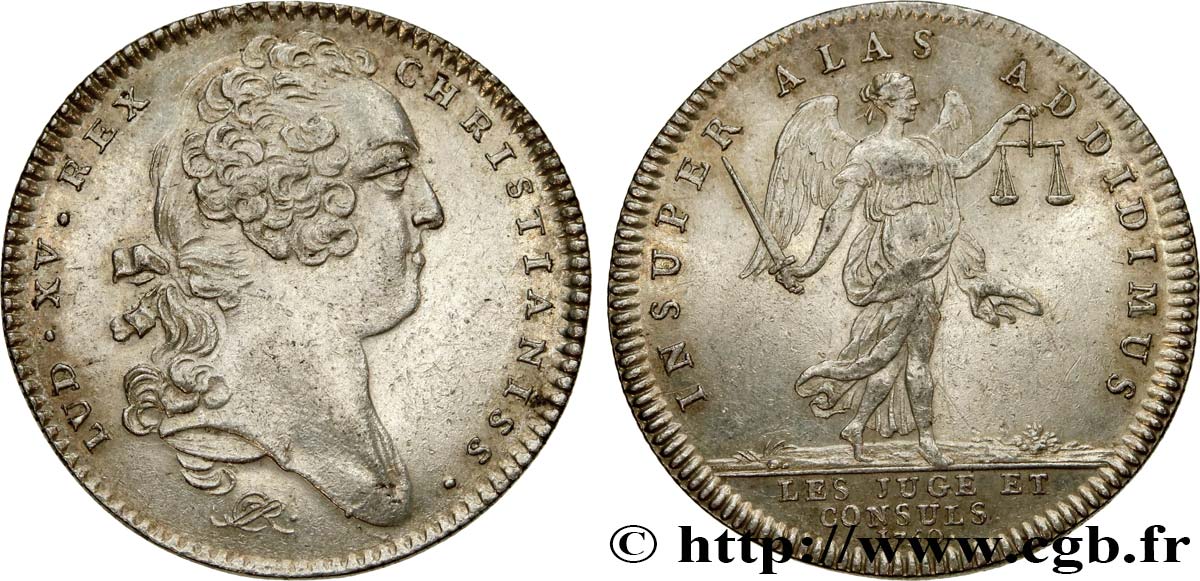
 Report a mistake
Report a mistake Print the page
Print the page Share my selection
Share my selection Ask a question
Ask a question Consign / sell
Consign / sell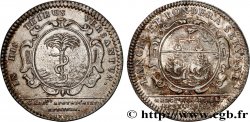
 Full data
Full data